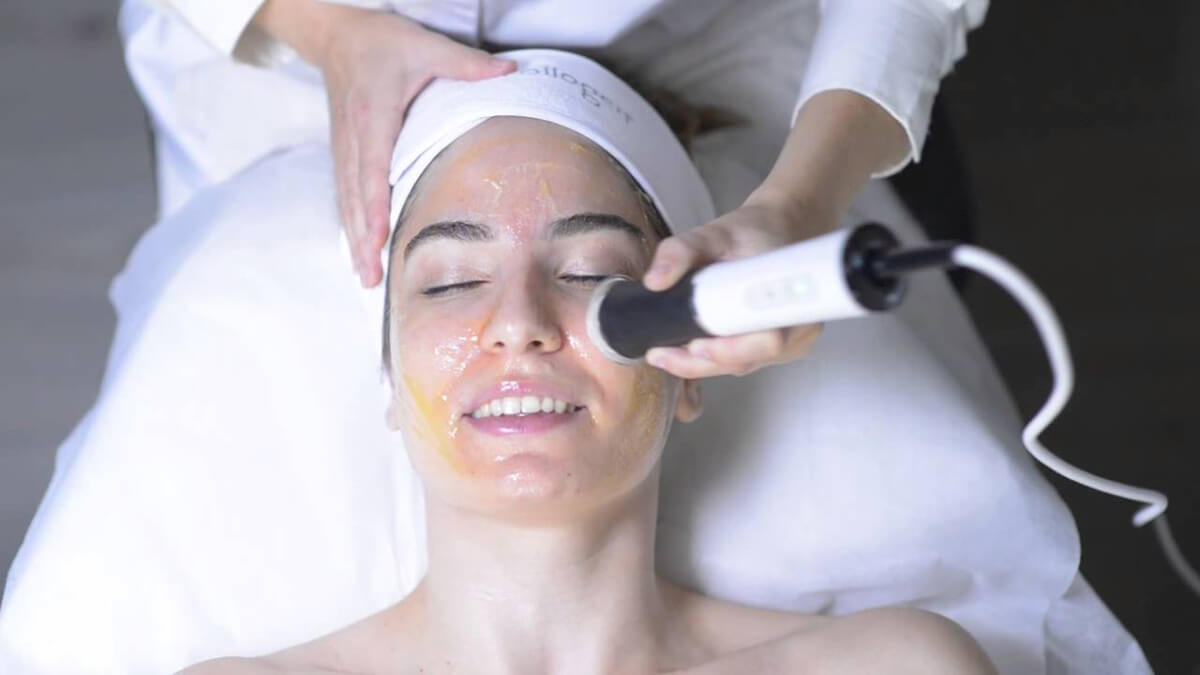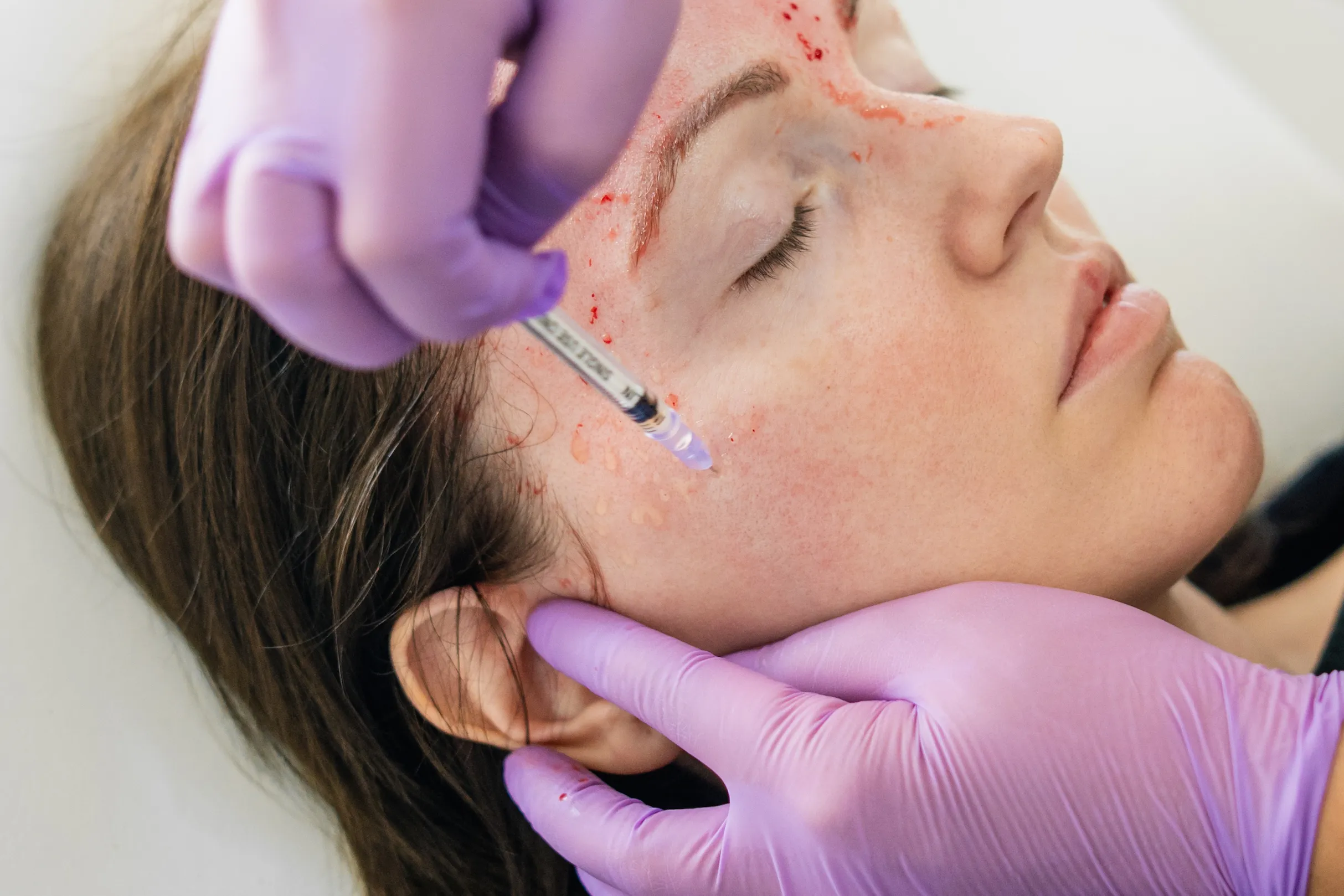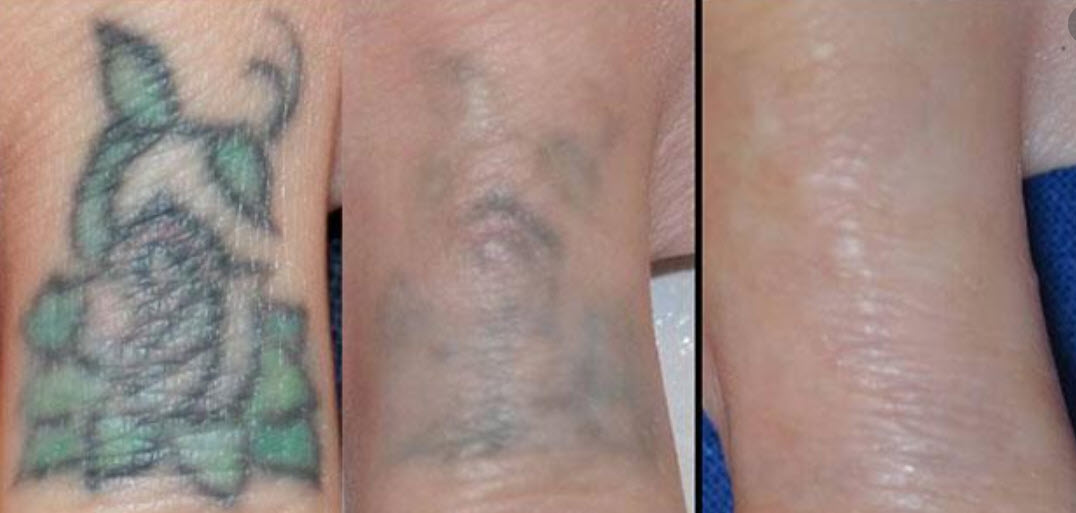HYDRAFACIAL
It’s also sometimes called “hydradermabrasion” because it involves microdermabrasion-like exfoliation paired with hydrating serums.
Known for its basic three-step process, the HydraFacial works to deep-clean, exfoliate, and hydrate your skin. However, the steps are customised generally according to skin type. This professional procedure may help treat a variety of skin conditions, including acne, dryness, and wrinkles.
Regular 4 weekly session gives your skin natural freshness and radiance.


CARBON PEEL LASER
CARBON PEEL LASER/HOLLYWOOD PEEL
The laser carbon peel is a fast and painless procedure done to help improve the look of skin. It’s used primarily for people with oily skin, acne, and enlarged or clogged pores. This treatment is also beneficial if you’re starting to see the effects of sun damage to your skin specifically pigmentation/melasma and freckles.
Laser carbon peels are not for everyone. Laser carbon peels are used to treat:
- acne
- acne pigmentation
- acne scarring
- enlarged and clogged pores
- melasma
- photoaging
- fine lines and wrinkles
- Rosacea
OXYGENO 3 IN 1 SKIN REJUVENATION
The OxyGeneoTM has earned the reputation as the #1 Facial Treatment for one simple reason… it works! And really works.
- Immediate and significant results in terms of freshness and radiance, visible after 1st treatment
- Soothing and relaxing
- Natural skin oxygenation from within by the Bohr effect
- Infusion of natural & powerful active ingredients to the skin
- Long term skin texture and appearance improvement
- Supported by real science and medical studies
- Suitable for all skin types
- Treatments for face
- Vegan ingredients
No downtime


RIPOLLAR RF
TRIPOLLAR RADIO FREQUENCY (RF) TECHNOLOGY IS AN INNOVATIVE, PROPRIETARY 3RD GENERATION TECHNOLOGY, WHICH WAS DESIGNED TO OVERCOME THE LIMITATIONS OF PREVIOUS MONO-POLAR AND BIPOLAR TECHNOLOGIES
TriPollar RF is clinically and histopathologically proven to simultaneously, homogeneously and volumetrically heat both superficial (dermal) and deep (hypodermal) layers while treating the body and face. The focused TriPollar RF due to its high density enables the use of low energy, thereby providing immediate and long-lasting results. The deep heating encourages the production of collagen and elastin, resulting in tighter and smoother skin. In addition, for the body, heating the fat cells accelerates metabolism and causes them to shrink, resulting in body shaping and minimized cellular appearance. Simple to use and remarkably efficient, TriPollar treatments deliver body shaping, skin tightening, reduction of cellulite and treatment of wrinkles from the first treatment, and long-lasting results after a course of treatments, without surgery or downtime.
INDICATIONS OF TREATMENT
- Fine lines and wrinkles
- Skin tightening
Cellulite reduction
PRP FACIAL
A vampire facelift, sometimes called a platelet-rich plasma facelift, is a cosmetic procedure that uses the patient’s blood to potentially fight the signs of aging.
A similar treatment, known as the vampire facial, garnered a lot of attention back in 2013 when Kim Kardashian posted a selfie on Instagram of her face covered in blood. But how does it work?
After blood is drawn from your arm, the medical professional will separate the platelets from the rest of the blood using a centrifuge (a machine that spins quickly to separate fluids of different densities). The platelet-rich plasma (PRP) will be injected dermis.
The procedure may:
- reduce wrinkles and rough texture
- plump skin
- diminish acne scars
- resurface post burn scars
- brighten dull and uneven skin tone
It’s safe for people of any age, but if you’re taking a blood thinner, have skin cancer, or any medical condition related to blood, such as HIV or hepatitis C, a vampire facelift isn’t recommended.


TATTOO REMOVAL
Tattoo removal can be achieved in a number of ways, ranging from laser treatments, chemical peels, dermabrasion and surgical excision.
What is tattoo removal?
Tattoo removal can be achieved in a number of ways, ranging from laser treatments, chemical peels, dermabrasion and surgical excision.
How does tattoo removal work?
Laser tattoo removal
Lasers are the most common method of tattoo removal performed today. Tattoos consist of thousands of particles of tattoo ink suspended in the skin dermis. The normal human immune system typically removes small foreign particles from the skin. Tattoo ink particles are too big to be removed by this system and are thus considered permanent. The use of lasers helps to break up these particles into smaller pieces that can be removed by the immune system.
Laser treatments work by targeting the ink particles in the skin with a highly concentrated light beam that heat up the ink particles and cause them to fragment into tiny particles that are then cleared away by the body’s immune system.
Complete removal of a tattoo is usually not accomplished in one treatment session. Laser tattoo removal typically requires more than one treatment to reduce the size of the ink particles and make it easier for them to be dispersed by the immune system.
Depending on the tattoo design, its size and colour, it may take 1-12 laser sessions to remove the ink. Some colours of ink are harder to remove than others and may not be able to be completely removed. There should be a six-week time period between each laser session to allow the wounds to heal and the body to absorb as much of the ink as is possible.
Laser tattoo removal is somewhat painful. Many patients describe it as like having a heavy rubber band snapped against the skin repeatedly. Topical skin numbing medications are used. Most of the time laser tattoo removal is tolerated very well.
Other methods of tattoo removal are more invasive than laser removal and are therefore less commonly performed today. These methods include dermabrasion, chemical peels and surgical excision of the tattoo.
Surgical excision tattoo removal
Tattoos may also be removed by direct surgical excision. This procedure is simply cutting out the skin that contains the tattoo. This technique is best used for small tattoos and may not be practical for very large tattoos. The skin surrounding the tattoo is then brought together and sutured.
This type of tattoo removal requires the use of local, regional or even a general anaesthesia depending on the size and site of the tattoo. A surgical scar is created by this type of tattoo removal.
Post-procedure bandages to be left in place for 48 hours.
